what class - modified 2010 Camaro SS
Moderators: Boondocker850, blindsidefive0
what class - modified 2010 Camaro SS
Hi Everyone,
I am a new member to COMSCC. I am not sure which class my car will fall into.
I have a 2010 Camaro SS that is heavily modified that I plan on participating with next year (2011)
My Car has the following:
Lingenfelter engine - Supercharged 526 RWHP (640 HP at the flywheel)
Cat back Borla exhaust
Upgraded brakes - Racing Brake rotors, stainless lines, upgraded pads.
Everything in the suspenaion has been upgraded.
All rear control arms have been upgraded.
9" ford rear end (still utilizing independent suspension)
roll cage getting installed over the winter
Aftermarket race seats being installed with roll cage
CCW wheels
I am a new member to COMSCC. I am not sure which class my car will fall into.
I have a 2010 Camaro SS that is heavily modified that I plan on participating with next year (2011)
My Car has the following:
Lingenfelter engine - Supercharged 526 RWHP (640 HP at the flywheel)
Cat back Borla exhaust
Upgraded brakes - Racing Brake rotors, stainless lines, upgraded pads.
Everything in the suspenaion has been upgraded.
All rear control arms have been upgraded.
9" ford rear end (still utilizing independent suspension)
roll cage getting installed over the winter
Aftermarket race seats being installed with roll cage
CCW wheels
Re: what class - modified 2010 Camaro SS
Check SPA in the rule book and see if there's anything there that you don't comply with.
See you at the track!
See you at the track!
Nate Hine
1985 driversupply Frankenspec
1995 Spec Miata #47(1) white-blue
1985 driversupply Frankenspec
1995 Spec Miata #47(1) white-blue
Re: what class - modified 2010 Camaro SS
Thanks Nate!nateh wrote:Check SPA in the rule book and see if there's anything there that you don't comply with.
See you at the track!
SPA looks like I fit there..
looking forward to running with the club next year!
Re: what class - modified 2010 Camaro SS
Oooh that sounds like fun 
I suspect SPA as well, Supercharger bumps you a class for a start, Modified control arms means SP.
Haydn
I suspect SPA as well, Supercharger bumps you a class for a start, Modified control arms means SP.
Haydn
- breakaway500
- Speed Racer

- Posts: 2663
- Joined: Wed Aug 29, 2007 8:47 am
- Location: In my shop,usually.
Re: what class - modified 2010 Camaro SS
Never seen a 9" used in an independent setup.(lots of 8.8's) Sounds interesting! Got any pics?
It's not what you drive, it's how you drive. "Lap times matter"
Re: what class - modified 2010 Camaro SS
Suspension upgraded and control arms upgraded: ok provided 100% of stock frame and subframe are retained.
Also no flared fenders, and all street running gear must be retained.
Also no flared fenders, and all street running gear must be retained.
Sam
Chief of Operations
#41 Nissan 200SX SER T40
Chief of Operations
#41 Nissan 200SX SER T40
Re: what class - modified 2010 Camaro SS
Sounds like I will be OK.
The Stock subframe is unmodified.
The Spohn Suspension arms are built to stock specs. They are made of a heavier guage steel and are boxed in for added Strength.
Here are a few pictures of the bolt in rear end kit from Lingenfelter.
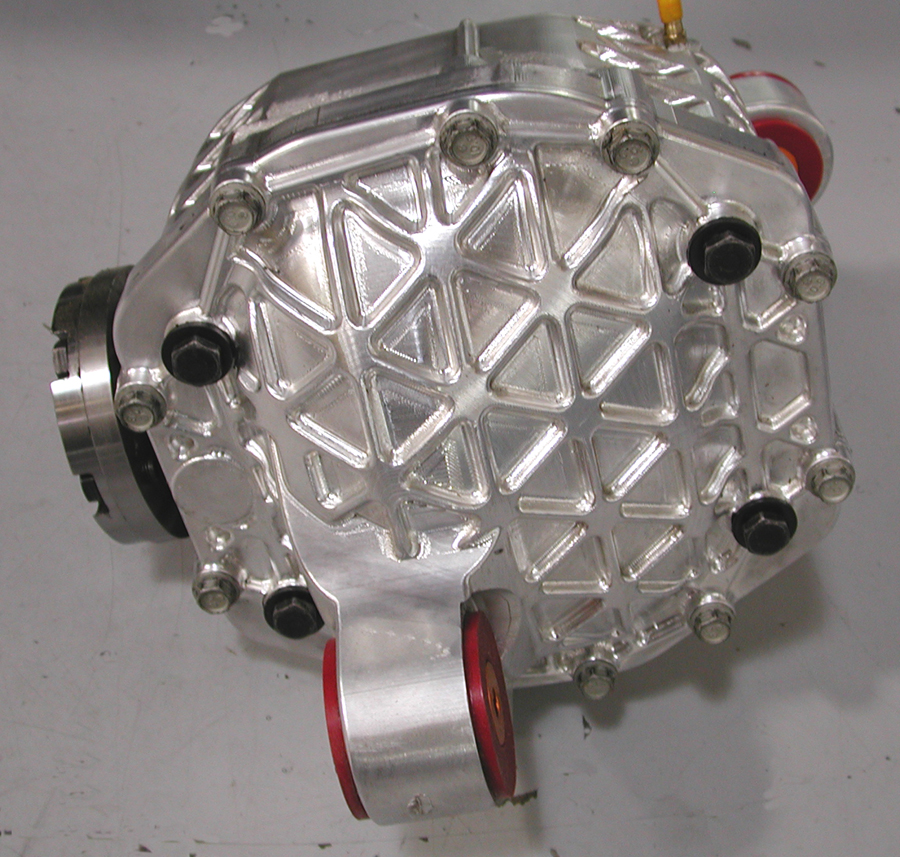
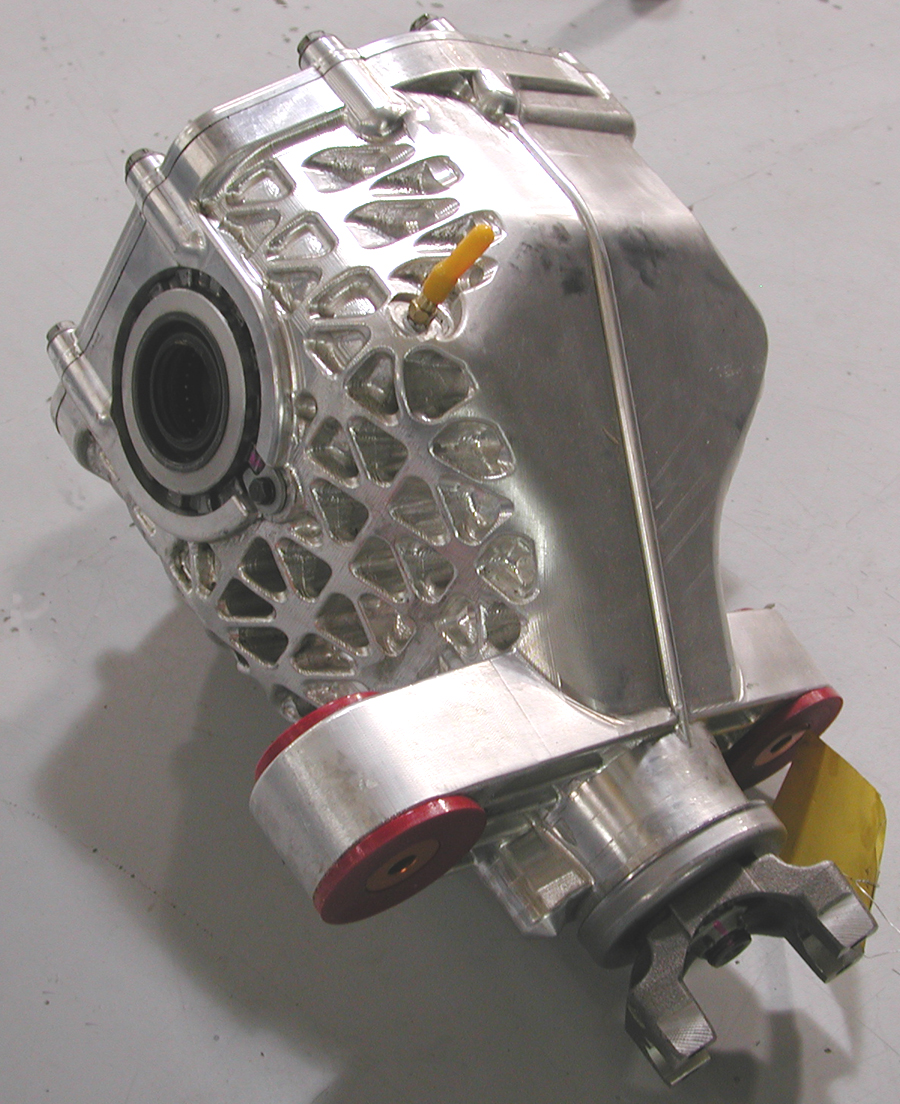
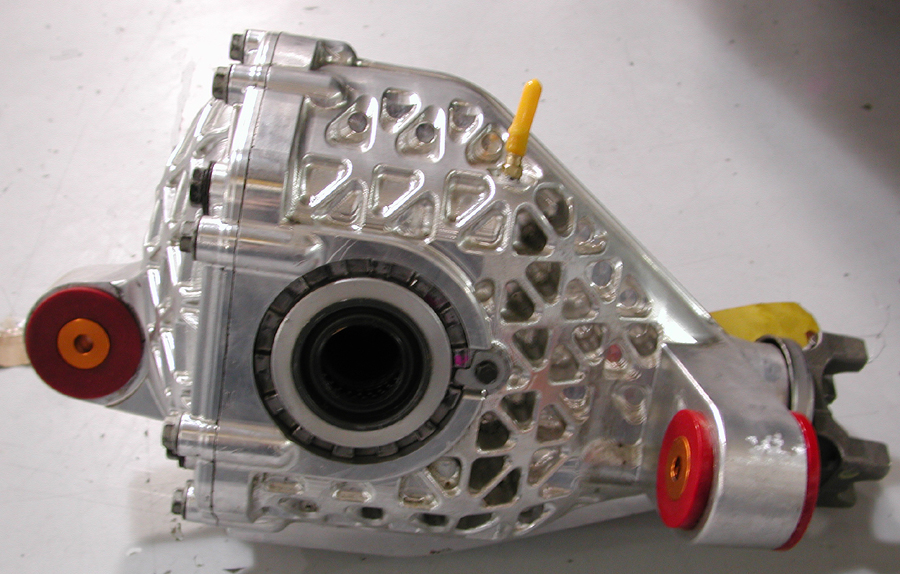
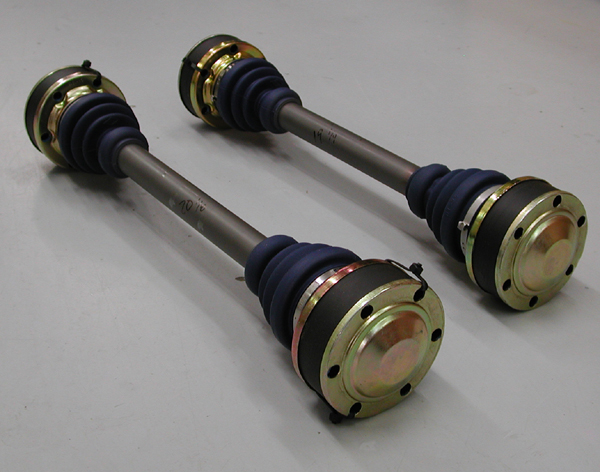
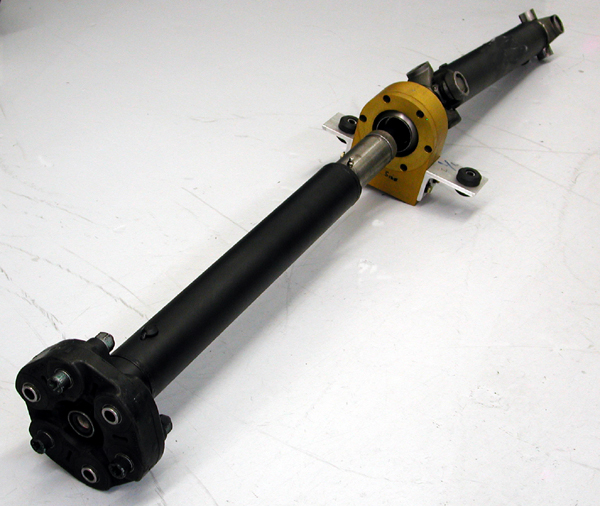
The Stock subframe is unmodified.
The Spohn Suspension arms are built to stock specs. They are made of a heavier guage steel and are boxed in for added Strength.
Here are a few pictures of the bolt in rear end kit from Lingenfelter.





-
eastcoastbumps
- Speed Racer

- Posts: 391
- Joined: Mon Jul 31, 2006 10:41 am
- Location: Central MA
Re: what class - modified 2010 Camaro SS
Everything is legal in SPA with the exception of these few rules:
General Tech Rules that every car must pass to get on track:
Good to hear that you're installing a cage and race seats.
Rule Book wrote: 1. Engine blocks may be obtained from any manufacturer. Number of cylinders used must have been offered in that particular car.*
2. Engine must be located in the original engine compartment. Original firewall must be retained.*
3. Cars must be equipped with street running gear, e.g., operating wipers and wiper motor; head and tail lights; interior consisting of stock dash board, door panels, side panels. Rear seat, all carpet, and headliner may be removed.
4. Stock glass windshield and rear glass must be used.
5. Silhouette of car must remain as delivered, with the exception of aerodynamic changes as defined in item 10 below.*
6. Composite panels may replace hood, fenders, bumpers, doors, and trunk lid as long as stock appearance is maintained.* Cars using aftermarket composite hoods must utilize hoodpins. Cars using composite doors must have tubing of the same size and thickness as the rollbar/rollcage, running from shoulder height (while seated) forward to at least 85% of the door opening.
7. 100% of stock frame or sub-frames must be retained.*
8. Tires must be DOT approved, with no undertread showing (For safety reasons), and either be listed in THE TIRE GUIDE or be available in three or more rim diameters. RECAPS ARE NOT ALLOWED.
Wheel type and size is optional provided the tread fits within the stock fender configurations measured by a vertical line dropped down from the fender lip, while the car is at rest on level ground, with the wheels pointing straight ahead. The edge of the tread is defined as that point on the tire that intersects with a 45 degree angle drawn from a line perpendicular to the centerline of the wheel. This shall be measurable by placing one edge against the wheel sidewall of a template consisting of two straight edges having an included angle of 135 degrees.
9. External body modifications to fender wells are not allowed although rolling of the inner fender lip and enlarging or removal of the inner wheel well is allowed as long as stock outer appearance is retained.*
10. Any aerodynamic device may be added as long as they are fixed and immovable.
11. Fuel cell (tank) must be separated from the passenger compartment by a metal or composite bulkhead. All fuel and oil lines passing through the passenger compartment must be either steel tubing or steel braided hose (Aeroquip, Earls, etc.).
13. Roll bars are mandatory in convertibles. Rollcages are highly recommended.
14. The passenger seat may be removed when a “Petty Bar” is installed.
15. Methanol mixed with water for injection will be considered a fuel and its container will be considered a fuel tank.
*Kit cars are exempt.
General Tech Rules that every car must pass to get on track:
http://www.comscc.org/rules/rulebooks/rules2011-r03.pdfRule Book wrote: VI. CAR REQUIREMENTS
A.
ANY VEHICLE OR DRIVER FAILING TO COMPLY WITH ANY ITEM IN SECTION VI AND VII BELOW WILL NOT BE ALLOWED TO RUN UNTIL THE FAILED ITEMS ARE CORRECTED.
Tires and Wheels
1. Higher than normal inflation pressures are recommended for competition. Consult an Instructor if you have any questions. No cuts, bruises, ply separations, or body rubbing on the sidewalls are allowed. RECAPS ARE NOT ALLOWED.
2. Wire wheels will be rejected if they have more than two adjacent loose spokes or more than three total on a wheel loose. Other wheels must be free from bends or cracks. Hub caps and trim rings must be removed. All lug nuts must be in place and tight.
B. Brakes 1. Wheel bearings will have minimal play. 2. Brake fluid reservoir must be full. 3. Brakes must be capable of stopping the car quickly and in a straight line.
4. Street Touring, Street Prepared, and Prepared vehicles are strongly recommended to run braided brake lines. COM drivers have experienced failures with new OEM flex lines while on track. Ford Mustang Cobra 1994-1998 must not use “as delivered” front flex lines. Use of aftermarket cross-drilled rotors is discouraged.
C. Suspension
1. Suspension must be suitable for high speed cornering and handling. Loose, soft, or worn shock absorbers, soft springs, sloppy ball joints, etc., are grounds for rejection of the car. Drag racing suspension modifications such as car-raising, "Up-Loc" or similar weight transfer devices, etc., are entirely unsuitable for controlled cornering and shall cause rejection.
2. Steering gear and linkage will have minimal play.
D. Engine Compartment
1. Engine compartment will be clean with no oil, water, or gas leaks. Hoses, lines, wiring and belts must be in good condition and securely mounted. The battery must be securely mounted. Exhaust system must be firmly mounted.
2. The use of nitrous oxide is prohibited in all classes. Cars having nitrous systems installed shall indicate such on the pre-registration form and tech sheet. The nitrous supply (bottle) shall be unhooked and removed from the car. Removal shall be verified at tech inspection.
E. Automobile Exterior
1. Cars must be generally neat, clean, and suitable for the event.
2. All exposed headlights and glass lenses must be completely covered with tape. Plastic lenses need not be taped. Clear tape is allowed. All cars must have operative and exposed brake lights, except Formula Prepared cars. F/P cars must have rain lights.
3. Removable hardtops may be removed and convertible tops may be lowered. T-tops on 914s, X1/9s, Corvettes, etc., will be allowed if they are structurally sound. Tonneau covers or any removable cavity cover must be removed.
4. All cars, except “Prepared” class cars, must be equipped with a full height and width windshield. Side windows
will be all the way open unless noted at the drivers meeting. Windownets are highly recommended.
5. Car numbers and class must be placed on both sides of the car before Tech Inspection. Numbers must have a minimum height of eight (8) inches. Class designations must have a minimum height of 4 inches. Numbers and class designation shall be on a vertical side panels or vertical side windows and shall be of contrasting color to the car. ALL MARKINGS MUST BE EASILY READABLE BY CORNER WORKERS. Novice drivers will place three vertical stripes on each rear quarter panel and trunk lid. Magnetic numbers are permissible provided they are secure to the vehicle, which is the responsibility of the driver of the vehicle.
F. Vehicle Interior
1. All loose gear must be removed before coming to Tech Inspection. If (the) spare tire is carried, it must be firmly secured. Battery must be firmly secured. Passenger seat back must be tied down or secured in position.
2. All cars must have well mounted, metal-to-metal, quick release lap and safety belt AND upper body restraint in good condition. Mounting points must be sturdy and immovable locations on the chassis, unibody, or rollcage/rollbar/harness bar. Suitable backing plates should be used where necessary. Refer to manufacturers, FIA and/or SFI mounting specifications for more information regarding hardware, backing plate, and installation requirements and suggestions. SS, ST and SP cars may use any DOT, SFI, or FIA approved harness. All other cars must use an SFI or FIA approved harness with a minimum of 5 points (2 lap belts, 2 shoulder belts, and at least 1 anti-submarine belt).
All harness belts must have the SFI or FIA date certification label and be current (i.e. not expired or out of code). Generally, SFI belts are certified for 2 years and FIA belts are certified for 5 years. Certification date begins as of the date of manufacture, not the date of installation into the vehicle.
When constructing bars for harness attachment be aware of the potential safety hazard that can be created by the addition of a horizontal bar directly behind the driver’s seat. In the event of a rearward impact the driver’s seat can be broken allowing the occupant(s) to impact the horizontal bar resulting in serious or fatal neck injuries. Suggestions for avoiding this potential hazard include moving the horizontal bar as far to the rear of the car as possible, utilizing a mount that is direct to an existing portion of the car or installing a full roll bar with an upper seat support.
In all classes, interior panels may be modified or removed in order to accommodate the installation of full roll cages or roll bars. This includes the modification or removal of window glass and lift mechanism to accommodate roll cage door bars. If a sunroof is removed the remaining hole must be covered with a fixed metal replacement.
3. Instructors and passengers of Instructors seat belt restraint system during driver schools and practice shall be of equal or greater restraint capability, as compared to the drivers seat belt restraint system, including type, width, and number of points. This is to ensure that the Instructor is not subjected to aggressive driving that the driver would be willing subject himself to, based on the level of driver seat belt restraint.
Novices and other students not yet licensed by COM must train in a vehicle possessing a minimum of two seats and safety equipment for both seats appropriate to the class, of which one seat is to be occupied by an approved instructor.
4. Roll bars are required in all Prepared cars and in all convertible and open cars regardless of class. Roll bars are permitted and strongly recommended in all classes and may be required in the future. A roll bar is a steel one- or two-hoop roll-over protection device, solidly mounted to the structure of the car, and provides two inches of space between the top of the roll bar and the top of the driver’s helmet. Commercially available “harness bars” and “style bars” are not acceptable roll-over protection. Factory installed roll-over protection on open cars is not acceptable. Specifically, the Porsche Boxster/Boxster S/993/996 convertible system, the Honda S2000, and Mazda MX-5 Miata factory equipment are not acceptable for competitive use. Convertibles may not use removable hardtops as a substitute for roll bars. A competitor may appeal to the Chief of Tech for acceptance of factory-installed OEM roll-overprotection. The decision by the Chief of Tech is final.
Guideline minimum roll bar specifications are:
Cars up to 1500 lbs use 1.375 x 0.095 DOM/seamless/alloy Cars 1501-2200 lbs. use 1.500 x 0.095 DOM/seamless/alloy OR 1.500 x 0.120 ERW Cars 2201-3000 lbs. use 1.500 x 0.120 DOM/seamless/alloy OR 1.750 x 0.095 DOM/seamless/alloy OR
1.750 x 0.120 ERW Cars 3001-4000 lbs. use 1.750 x 0.120 DOM/seamless/alloy (no ERW allowed)
For cars competing prior to the 2000 season that are outdated by these rules, "grandfathering" will be granted to those drivers/owners who request that their car be considered. Grandfathering of existing cars will be up to the discretion of the stewards and chief of Tech and will only be extended to cars that are brought to the stewards or chief of Tech. It is the responsibility of the competitor to show that the roll bar or roll cage was legal according to the 1999 rules and competed in the same configuration prior to the 2000 season.
All roll cages/bars must be padded with non-resilient material such as Ethafoam or Ensolite with a minimum thickness of 1⁄2” in all areas which may come in contact with the driver’s and/or instructor’s helmet. Similar padding is recommended in areas where the driver’s and/or instructor’s arms or legs may come in contact with the roll cage/bar.
5. In all classes, interior panels may be modified or removed in order to accommodate the installation of full roll cages. This includes the modification or removal of door panels, window glass and lift mechanism to accommodate roll cage door bars, even in classes that require such components Cars determined by the Stewards to have removed interior panels beyond the spirit of this rule will be bumped up one class. For guidelines of material selection and construction practices, consult the Sports Car Club Of America (SCCA) General Competition Rules. Cars with roll cages that are constructed to SCCA GCR or other recognized sanctioning bodies’ specifications are not bound by the material selection criteria mentioned above.
6. Helmets must be a minimum of 2 inches below the top of Targa Top vehicles.
7. Window nets are permitted in all classes.
8. The following safety equipment is allowed in ANY class: a. Fire extinguishers and fire systems b. Master electrical kill switches c. Fuel cells
d. Windshield/window clips and restraints e.Towing Hooks f.Flywheel scatter shields
G. Miscellaneous
1. AUTOMOBILES INVOLVED IN AN INCIDENT causing damage must be inspected by the Tech Inspector and/or Event Stewards before being allowed back on the track.
2. All in car video equipment must be inspected and approved by Tech.
3. Track imposed maximum sound limits will be in effect at COM events for all classes. Sound limit at all tracks is 99 Db or less at 50 feet while under power on the track. Each competitor is responsible for meeting track-specific sound limits. For Time Trials, a noise violation results in disqualification with no points awarded for the event and no refund.
H. All cars shall be powered by gasoline, diesel fuel, biodiesel fuel or electricity (provided by batteries) alone or in combination. Gasoline may be leaded or unleaded. Gasoline may include race gas limited by the SCCA fuel GCR to prevent toxic chemical use. Pump gasoline including Methly or Ethyl Alcohol (Methanol or Ethanol) as limited by SCCA GCR may be used. Methyl or Ethyl Alcohol as a primary fuel is prohibited. Small amounts of Methyl or Ethyl Alcohol may be injected into the engine for engine cooling and detonation control when mixed with at least 50% water. No more than 1 gallon of such mix shall be carried in the car to ensure that it is not a primary fuel. Whenever an alcohol/water mix is injected into the engine it shall be considered a fuel and the tank must follow the same rules as other fuels.
Good to hear that you're installing a cage and race seats.
Pete McParland #617
Honda S2000
Honda S2000
Re: what class - modified 2010 Camaro SS
See page 17 in the current version (at http://www.comscc.org/rules) for the 2011 wording for SPA.
For 2011, the rule book is reorganized. The content in the SP section is reorganized but unchanged, except for a passenger seat definition for safety.
For 2011, the rule book is reorganized. The content in the SP section is reorganized but unchanged, except for a passenger seat definition for safety.
Nate Hine
1985 driversupply Frankenspec
1995 Spec Miata #47(1) white-blue
1985 driversupply Frankenspec
1995 Spec Miata #47(1) white-blue
Who is online
Users browsing this forum: No registered users and 1 guest


